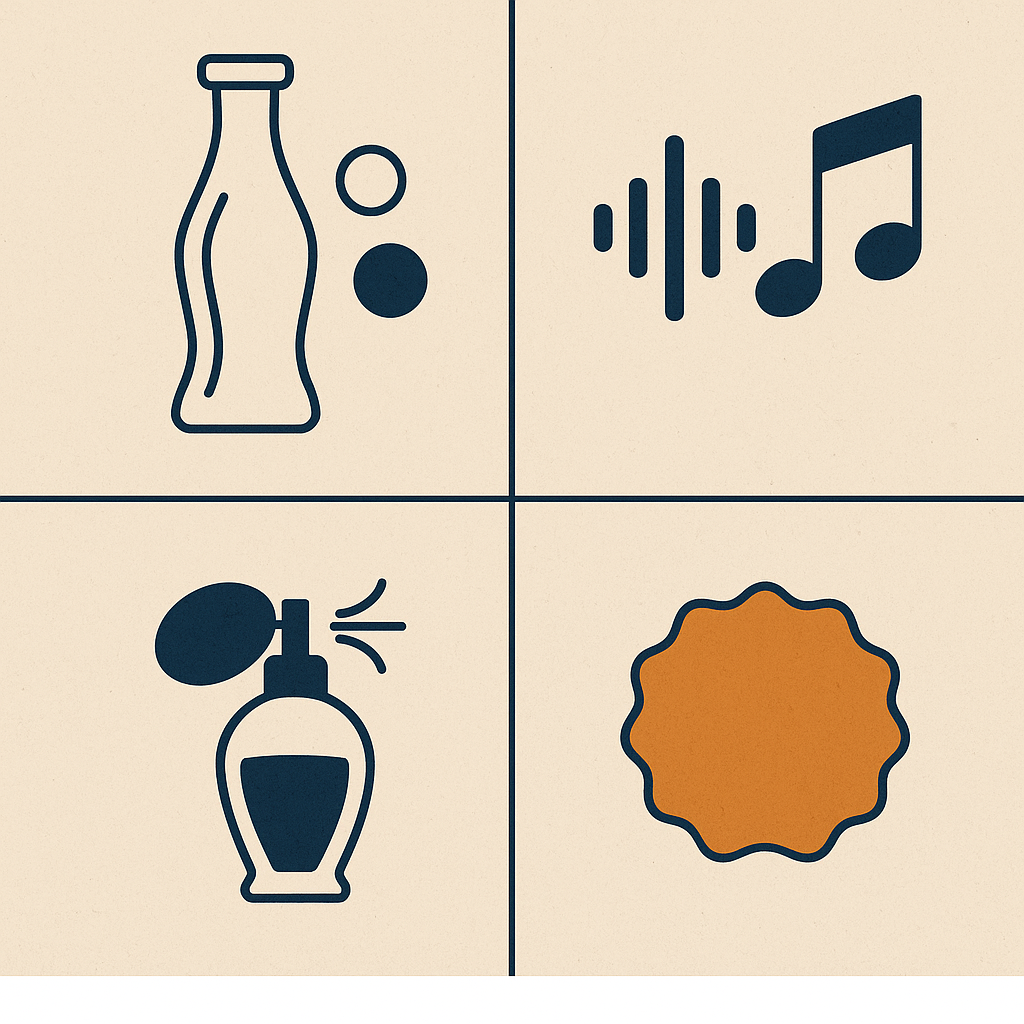Brand Control, Part 7: “Beyond the Logo” — Trade Marking Product Shapes, Sounds, and Scents
 When most people think of trade marks, they picture logos or brand names — the usual suspects. But in the eyes of the law, a trade mark is any “sign” capable of distinguishing your goods or services. That opens the door to a broader, bolder set of brand assets.
When most people think of trade marks, they picture logos or brand names — the usual suspects. But in the eyes of the law, a trade mark is any “sign” capable of distinguishing your goods or services. That opens the door to a broader, bolder set of brand assets.
Welcome to the world of non-traditional trade marks — where shapes, sounds, colours, and even scents can be legally protected.
🧴 What Can You Register?
Some of the most iconic brand cues aren’t names or logos — they’re sensory experiences. And if consumers link that experience to your business, it might just qualify for registration.
Shapes
Examples:
-
The triangular prism of a Toblerone bar
-
The unmistakable contour of a Coca-Cola bottle
But be warned: shape marks face serious scrutiny. If the shape is dictated by function or gives a competitive advantage (like a handle or grip), it likely won’t qualify. The Mayne Industries decision is a key example of this strict approach.
Sounds
Think:
-
The MGM lion’s roar
-
The McDonald’s “I’m lovin’ it” jingle
To register, the sound must be distinctive and consistently used as a badge of origin — not just part of an ad.
Scents
Rare, but not impossible. One of the few global successes? A floral fragrance registered in the U.S. for sewing thread. Australia is stricter — but if you can prove that your scent is uniquely linked to your brand (and not functional), it may stand a chance.
Fun fact: As at the date of publishing this blog post, there are only two registered scent marks in Australia – one being for a eucalyptus scent applied to golf tees, and the other for a cinnamon scent applied to non-wood based furniture.
How oddly specific …
Colours
Cadbury’s battle to protect its signature purple (Pantone 2685C) is the most high-profile example in Australia. Colour marks are hard to secure — especially for common colours or combinations — but can be powerful if consumers identify them with your business.
🎢 The Legal Hurdles
These marks face a higher bar than standard word or logo marks. Here’s why:
-
Inherent distinctiveness is rare. Most non-traditional marks only succeed if they’ve acquired distinctiveness through long-term, exclusive use.
-
Functionality kills applications. If a shape or sound serves a practical or aesthetic purpose, it’s unlikely to pass.
-
You’ll need evidence. Think sales volumes, advertising spend, market surveys, and media references that link the feature to your brand.
This isn’t checkbox territory — it’s prove-your-case territory.
💡 IP Mojo Tip
Your brand isn’t limited to what you can type or sketch. If your product’s shape, jingle, colour, or even fragrance makes people think of you — and no one else — you may be sitting on a powerful trade mark.
Just remember: non-traditional doesn’t mean non-challenging. You’ll need to back it up with serious evidence. But for brands that break the mould, the legal protection is well worth the effort.